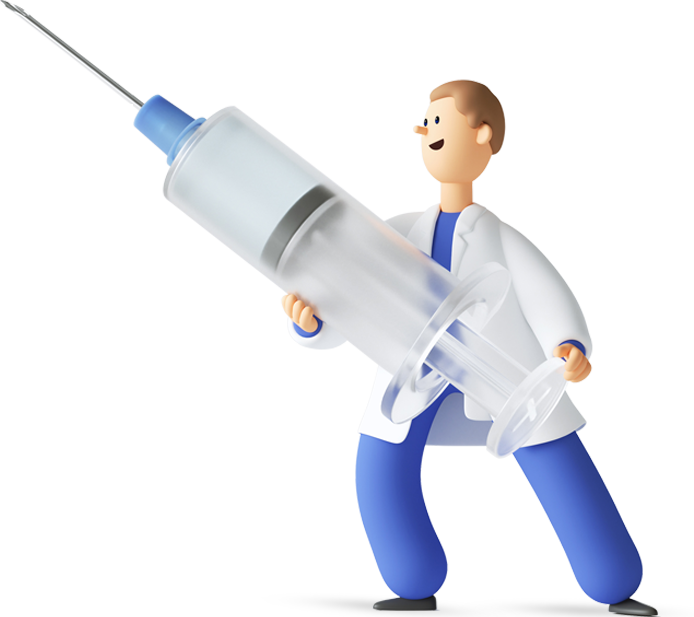
Eardrum Surgery What is it?
Eardrum surgery is a surgical intervention to repair tears, holes or damage to the eardrum. The eardrum (tympanic membrane) forms the boundary between the outer and middle part of the ear and plays an important role in hearing by transmitting sound waves inside. Damage to the membrane can lead to hearing loss and infections. Eardrum surgery is performed to correct such problems and restore ear function.
Eardrum Surgery When is it done?
Eardrum surgery may be recommended in the following cases:
- Perforated eardrum: The eardrum can perforate for various reasons, for example due to trauma, ear infections or the accumulation of water in the ear. Eardrum surgery is performed to close the holes.
- Chronic Middle Ear Infections: Recurrent infections can lead to damage to the eardrum. Repairing the eardrum can help prevent infections.
- Hearing Loss: Holes or tears in the eardrum can block the transmission of sound, causing hearing loss. Surgery can be performed to correct this problem.
- Eardrum Damage: Permanent damage to the eardrum can occur as a result of traffic accidents, explosions or other severe trauma.

Eardrum Surgery How is it done?
Eardrum surgery is usually performed under local or general anaesthesia. During the procedure
- Anaesthesia Practice: The operation is usually performed under general anaesthesia, but in some cases local anaesthesia may be preferred.
- Repair of damage to the eardrum: The surgeon uses tissue or membrane to repair a hole or tear in the eardrum. If necessary, repairs can be made using grafts taken from tissues behind the ear.
- Air Duct Support: After the operation, a tampon or a small device is usually inserted to allow the eardrum to heal and prevent the risk of infection.
- The Recovery Process: There may be pain, congestion or a feeling of pressure in the ears for a few weeks after the operation. Full recovery usually takes 2-3 weeks.
Eardrum Surgery Prices
The cost of eardrum surgery may vary depending on the region where the patient is located, the type of hospital and the experience of the surgeon. It is best to contact your clinic or hospital directly to get information about prices.

Eardrum Surgery Benefits
Eardrum surgery provides the following benefits:
- Elimination of Hearing Loss: Hearing loss due to holes or tears in the eardrum is corrected by surgery.
- Prevention of Infections: Damage to the eardrum can allow bacteria to enter the ear. Repair reduces the risk of infection.
- Improvement of Ear Functions: The eardrum provides hearing functions by transmitting sound waves. A repaired eardrum restores these functions.
- Aesthetic Recovery: Especially large holes or tears in the eardrum can be disturbing in terms of appearance. Aesthetic improvement can also be achieved with surgery.
Eardrum Surgery Risks
Eardrum surgery is usually a safe procedure, but it carries some risks:
- Haemorrhage There may be slight bleeding in the ear during surgical intervention.
- Infection: Infection can develop after eardrum surgery, so proper care and follow-up is important.
- Hearing Loss: It is possible to experience hearing loss after the operation, but this is rare.
- Reperforation of the eardrum: Over time, the eardrum may perforate again, but this is also rare.
- Balance Issues: Although very rare, eardrum surgery can lead to balance problems.
Eardrum Surgery Post Recovery Process
The healing process after eardrum surgery proceeds as follows:
- Early Days There may be a feeling of pressure or pain in the ear for a while after the operation. Comfort can be provided with painkillers.
- Avoiding the Bath: Water should be avoided from entering the ear until the eardrum heals.
- Controls Your doctor will do regular checks to monitor the healing process. These checks are important to reduce the risk of infection and speed up the healing process.
- Pain and Infection Follow-up: During the first few weeks there may be pain, fullness or discharge from the ear. It is important to watch for signs of infection.
Frequently Asked Questions
How is eardrum surgery performed?
Eardrum surgery is a surgical procedure to repair a hole or tear in the eardrum. During the procedure, a graft can be placed in the eardrum or the damage can be repaired using existing tissue.
Is eardrum surgery painful?
As eardrum surgery is usually performed under general anaesthesia, you will not feel any pain. There may be mild pain for a few days after the operation, but this pain can usually be controlled with painkillers.
What is the healing process after eardrum surgery?
The healing process usually takes 2-3 weeks. There may be a feeling of pressure, pain or fullness in the ear for the first few days. Contact with water should be avoided until the eardrum is fully healed.
Is there hearing loss after eardrum surgery?
Eardrum surgery is done to treat hearing loss. Most patients improve their hearing after surgery. However, hearing loss may rarely occur after the procedure.
Why is eardrum surgery necessary?
Holes or tears in the eardrum can lead to hearing loss, infections and fluid build-up inside the ear. Eardrum surgery is necessary to correct these problems and restore ear function.
At what age can eardrum surgery be performed?
Eardrum surgery can be performed at any age. However, it is more commonly performed in children and young adults. Damage to the eardrum can also be repaired in adults.
Is there a risk of infection after eardrum surgery?
There may be a risk of infection after eardrum surgery, but this risk can be minimised with proper care and following the doctor's recommendations.











